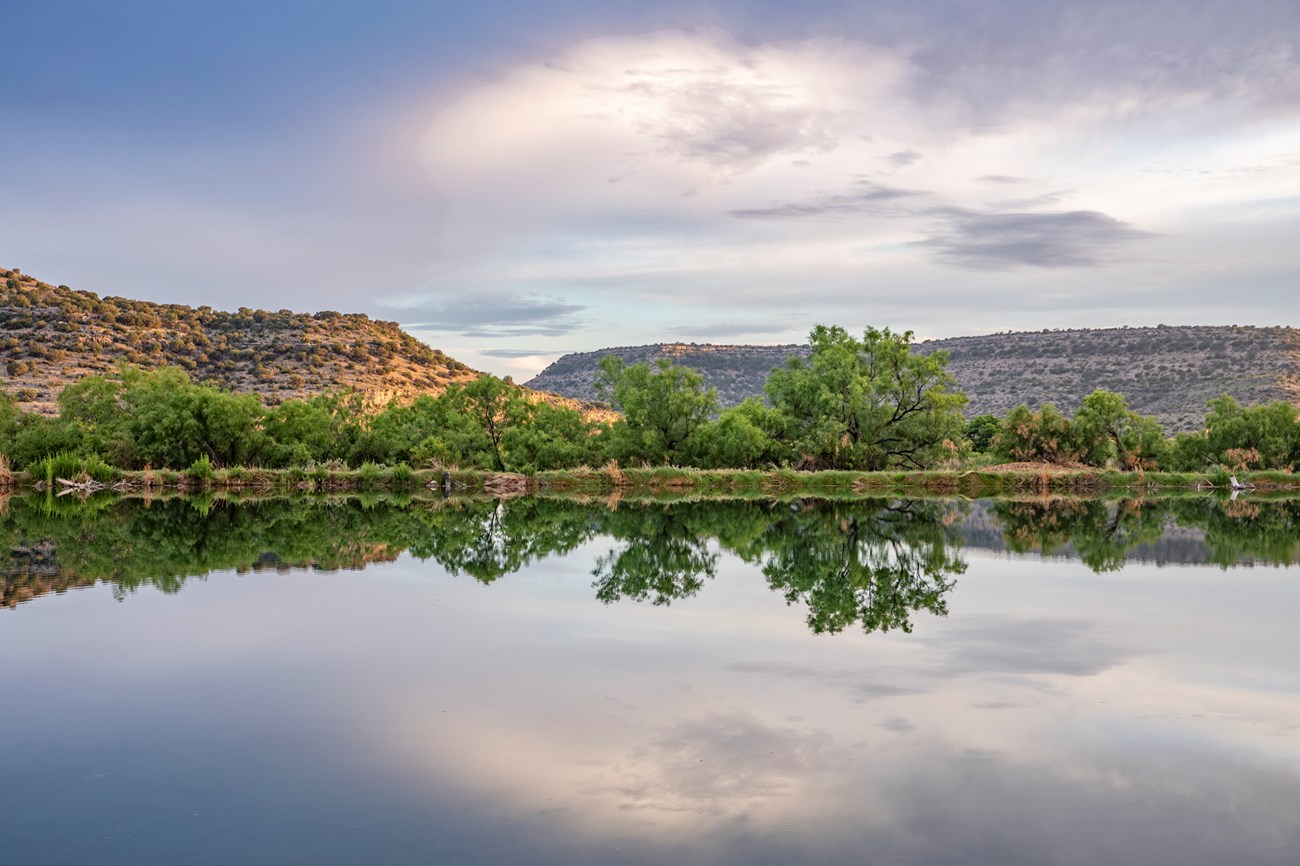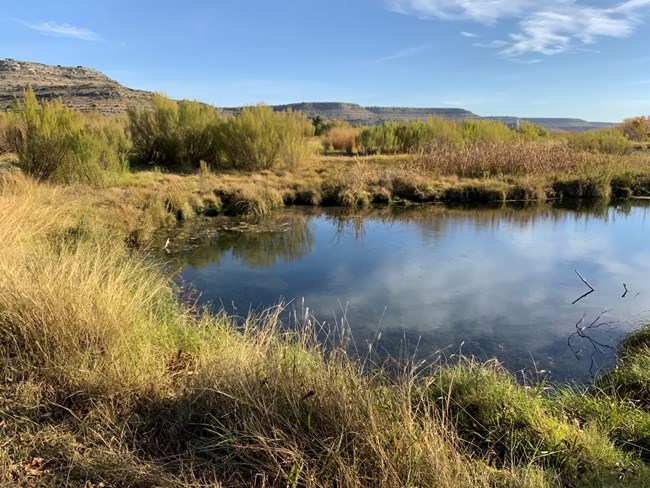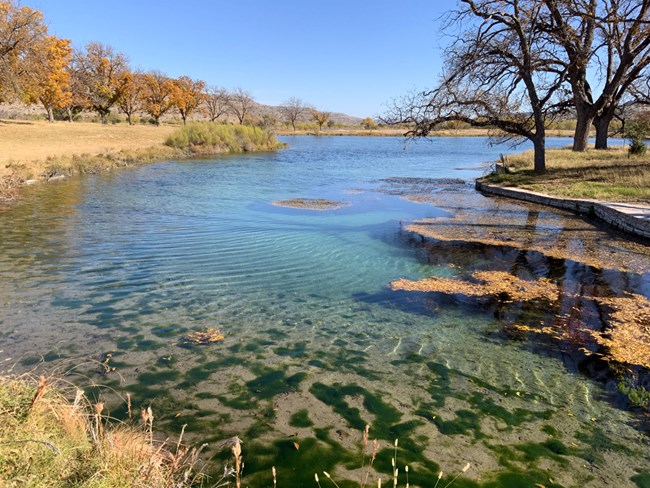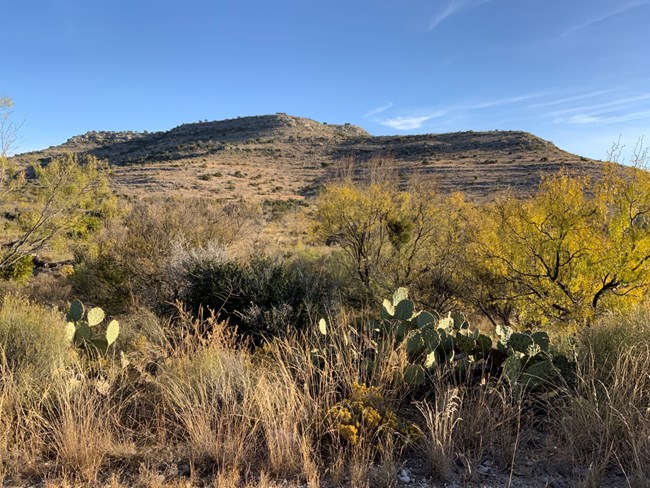Last updated: August 9, 2024
Article
Southern Texas Desert Oasis

Kenny Braun/The Nature Conservancy

Tom Baldvins/Colorado Natural Heritage Program
Independence Creek Preserve boasts a spring-fed stream that flows perennially in arid southwest Texas. Situated within the southern Great Plains, this site is dominated by mesas and includes Caroline Spring, a stretch of Independence Creek above its junction with the Pecos River, and surrounding land that includes characteristic examples of plants and animals typical of the Chihuahuan Desert. The preserve is home to three vulnerable native fish species and nesting and migratory birds. This new 20,691-acre NNL that provides vital river habitat is owned and managed by The Nature Conservancy and is located about 15 miles south of the town of Sheffield. NNL designation recognizes The Nature Conservancy’s commitment to stewardship of this site’s significant natural features.
Independence Creek Preserve represents a remarkable oasis in the arid Chihuahuan Desert landscape. The spring’s substantial contribution of fresh water to Independence Creek transforms it into a vitally important tributary of the Pecos River, changing the river’s otherwise alkaline nature, improving both water quality and quantity. No other sites in comparable condition illustrate the transformation of a typically dry stream channel to a perennially flowing stream.

Tom Baldvins/Colorado Natural Heritage Program
The presence of this sustained, aquifer-supplied water from Independence Creek in a desert environment also makes the creek a key habitat for three vulnerable native fish species: the Proserpine shiner (Cyprinella proserpina), the Rio Grande Darter (Etheostoma grahami), and the Headwater catfish (Ictalurus lupus). Further, significant relict stands of large Texas live oak (also called plateau live oak, Quercus fusiformis) are found along the creek banks despite periodic flooding. These ancient oak trees are now at the western extreme of their range in Texas. This species was previously more widespread in this region and are remnants of the vegetation that grew in this location thousands of years ago when the climate was wetter and cooler.
Riparian and bottomland habitats at Independence Creek Preserve provide important resources for both resident and migratory bird species, including habitat for several rare bird species, such as the formerly federally endangered black-capped vireo (Vireo atricapilla). Known as a birding hotspot, more than 250 species can be found within the preserve.

Tom Baldvins/Colorado Natural Heritage Program
This vital creek bottom land represents only a small portion of the preserve; about 90% of Independence Creek Preserve is upland habitat. The extensive surrounding mesa landscape supports largely undisturbed stands of typical Chihuahuan Desert vegetation. Canyon hillsides and mesa tops are characterized by juniper woodlands dominated by Ashe's juniper (Juniperus ashei) and Chihuahuan desert scrub dominated by creosote bush (Larrea tridentata) and honey mesquite (Prosopis glandulosa).
Independence Creek Preserve joins hundreds of National Natural Landmarks located throughout the country, designated to recognize and encourage the conservation of the Nation’s outstanding biological and geological resources. Together these special places represent the diversity and vastness of the natural world.
